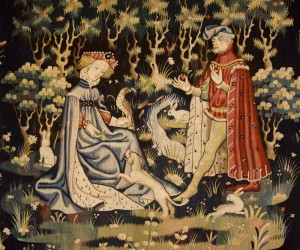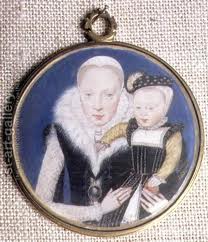Marriage
Introduction
Chapter 3 : What Made a Marriage?
A valid marriage could be formed in two ways: by “verbi de praesenti “, that is, "I marry you" or "John is my husband", or by “verbi di future”, such as "I will marry you”, followed by consummation. The necessity for consummation was not explicit in the first case and was debated by different theologians. Witnesses were not required, although without them, it might be difficult to prove the first case. If verbi di future were used, without consummation, this created a pre-contract that would require a Church dispensation to set it aside.

These alternatives clearly leave room for ambiguity should one of the parties later wish to repudiate the match and there were no witnesses. Even if there had been others present, finding witnesses who were still alive, could remember something that might have taken place years before and who would be willing to swear in a Church court could be difficult.
The case of Lady Katherine Grey and her marriage to the Earl of Hertford in 1560 is a useful example. When the secret match was discovered, Lady Katherine could not produce the priest or any witnesses, so the validity of the marriage was questioned. A pre-contract without consummation was not binding, although it had to be formally disavowed.

Despite a priest not being necessary, matrimonial disputes were heard in the Church courts, in accordance with canon rather than secular law. No doubt the Church courts were strewn with young women with babies who believed that the promise of marriage they had received was adequate, but who could not produce the necessary evidence. However, if marriage could not be proven, but paternity was, the father was obliged to contribute to the child’s keep.
At the core of matrimony was the principle of consent. No-one could be married without his or her own consent. Thus, marriages arranged in childhood had to be confirmed by the spouses when they reached majority (twelve for girls and fourteen for boys). So, although amongst the upper classes only a vanishingly small number were the actual choice of the parties for romantic reasons, parents had to exert enough moral and emotional pressure for the person to accept the marriage and make the vows. Since children accepted obedience to their parents as next only to obedience to God, it was rare for the child not to agree.
If either party could prove later that the marriage had taken place against his or her will or as a result of coercion, it would be annulled. Equally, once consent had been given, and the union consummated, not all of the angry parents in the world could break up a match, as parental consent was not required.
The Paston family went to extraordinary lengths to break off the marriage of their daughter with the steward. She was beaten and ill-treated, but could not be forced to deny her marriage, even with pressure from the local Bishop. In the end, the family had to accept the match and content themselves with casting her off.
